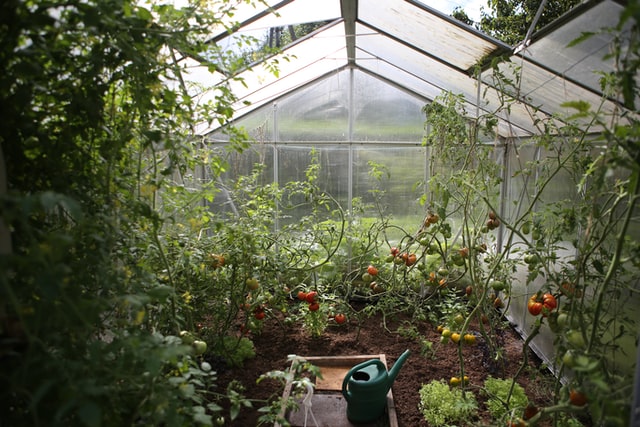 |
8 Ways to Make Your Soil More Acidic (And 5 Things You Shouldn't Do) |
Understanding soil pH is important. Soil pH indicates how acidic your soil is.
Knowing the pH level in your garden is important in understanding which plants to grow. Some gardens have acidic soils, others are neutral soils, and others are alkaline soils.
For example, the pH of the natural soil in my garden is between 6.2 and 6.5 (somewhat acidic).
If your soil is alkaline, you can make it more acidic.
If you have neutral soil and want to plant acid-loving plants (heather), you can make the soil more acidic.
But before we get into that, let’s take a closer look at why you need to acidify your soil:
4 reasons to make your soil more acidic
You may want to make the soil more acidic because:
1. Excessively alkaline conditions cause a nutrient deficiency in plants.
Phosphorus, iron, and manganese are less available if the pH is very alkaline. This can cause plants to show signs of nutrient/mineral deficiencies.
In general, you should lower the pH closer to and ideally less than 7 to fix the problem. For those with very alkaline soils, the goal is to achieve a more neutral pH (not too acidic).
You usually aim for a pH of 6.5, which is considered the best pH for gardens and allows a wide variety of plants to grow. At this pH, the presence of essential nutrients and the activity of bacteria and worms are optimal.
It is unrealistic to expect that you can make the soil more acidic by dealing with super alkaline soil.
2. You want to create space for planting crops that require acidic soil.
If you already have relatively stable soil with a pH of 5 to 7, you can also acidify it (even in some areas) to plant crops that require acidic soil. (See some examples below.)
Reducing the soil pH to approximately 5 will allow you to plant erythroid (acidic) plants. But don’t go too far.
In soils with a pH of 3 to 5, most plant nutrients become more soluble and easier to wash. If the pH is less than 4.7, the bacteria will not decompose the organic matter and fewer nutrients will be available to the plants.
These are the two main reasons why the soil is more acidic
3. Turn the pink hydrangeas blue.
The soil pH for your blue hydrangea flowers should be between 5.2 and 5.5 and change the mineral content of the soil to give the plants aluminum.
When possible, you should keep it sour for a long time. If you like, consider growing them in pots to make things easier.
But personally, I don’t think it’s worth it!
Do you have very alkaline soil?
You can purchase a pH test kit to determine if the soil in your garden is alkaline. If the soil in your garden has a pH between 7.1 and 8.0, you are dealing with alkaline soil.
If you want to know if you have alkaline soil without buying a test kit, you can also do a simple test at home.
Just add a little soil from your garden to a jar of vinegar.
If it is foaming, then the soil is alkaline. If not, maybe not.
You can also get an idea of the pH of the soil by looking at the plants in and around your garden.
Having lots of plants in such an alkaline environment will give you a clearer idea of what works well in your garden.
If you have alkaline soil, you can do what you have, especially as long as it’s not too much.
Consider moving the plants to the right location rather than trying to move them around to accommodate different plants. Instead of making changes to the soil, choose plants that are naturally tolerable and even thrive in the conditions in which you live.
Choose plants that are fond of alkaline soils.
To help you create a beautiful garden without changing the pH of the soil, here are some plants that love alkaline soil:
Trees for alkaline soils
black grass
cold cotoneaster
maple field
hawthorn
data
Montezuma's room
rowan alnifolia
wood
Strawberry
Shrubs for alkaline soils
buddleia
deusia
forsythia
hydrangea
purple
osmanthus
cream Philadelphia
Santolina hamaecyparis
snowball
weigela
Vegetables and herbs for alkaline soils
Vegetables, especially beads, but also some. Options include but are not limited to:
asparagus
Broccoli
cabbage
cabbage
leek
peas
beans
And like herbal medicines:
Marjoram
Rosemary
oregano
Flowers for alkaline soil
Anchusa
boreal
California poppy
lavender
Lily of the valley
file
Poland
trifoliate
Viper beetle chandelier
wild marjoram
Move from more neutral soils to acidic plants
As mentioned above, if you have very alkaline soil, replacing enough soil to grow acid-loving plants can be an intense and serious endeavor.
Small changes are definitely better, but to benefit from alkaline conditions, you need to grow the plants listed above and other plants that do well in these conditions.
However, if you have more neutral or slightly acidic soil, improving capillary soil is more affordable and easier.
I highly recommend growing it in pots or raised beds instead of planting it in the ground in your garden. Changing a small area like this is easier and less intrusive than changing the pH in a larger area.
What plants need acidic soil?
Below are some plants you may want to acidify the soil to grow in pots, raised beds, or in the ground:
azaleas
camellia
rhododendrons
health
blackberry
Cranberry
5 things you should NOT do to sour your soil
First, here are five things you shouldn’t do:
Don’t buy “blue stuff” like aluminum sulfate! The results come quickly, but many of them may not necessarily lower the pH and affect phosphorus levels in the soil. Frequent use can also lead to toxic levels of aluminum in the soil.
Ferrous sulfate, available in many garden centers, can also affect phosphorus levels.
Do not use peat/sphagnum to add acid. Peatlands are an important reservoir of coal and participation in their destruction is never a viable option.
Do not use synthetic fertilizers such as those containing ammonium nitrate or ammonium sulfate. They can effectively increase the acidity of the soil, but they have value to humans and the planet. (About 45% of industrial CO2 emissions come from only four products: cement, steel, ammonia, and ethylene. Ammonia (mainly used in agricultural and horticultural fertilizers) emits 0.5 Gt CO2 per year. Contribute in our climate crisis, avoid them as much as possible.)
Lastly, don’t change gender unless absolutely necessary. It is always better to do your best. Instead of fighting nature, we should do it. If you want to plant acid-loving plants in your garden with alkaline soil, consider growing them in special raised beds or in pots filled with heather compost before making soil changes. (more on yews below).
8 ways to make your soil more acidic
It is important to understand that there is no “miraculous solution”. Changes in organic pH occur gradually over time.
1. Add sulfur to the soil
If you have problems with excessive alkalinity, adding sulfur is a slow but sure solution. Adding sawdust or dust will gradually acidify the soil over several weeks (or even months).
The effect of sulfur on changing soil pH depends on the type of soil you have. Clay soils require more sulfur to change their pH than sandy soils.
Soils rich in organic matter also need more sulfur to redeem themselves.
2.Add fertilizer to the soil
Adding compost to gently neutralize alkaline soil is a simple but effective measure that balances soil pH very slowly and very slowly over time.
Just add fertilizer as a top dressing and the soil expiration date will do the job of incorporating it into your soil.
3. Give the floor a leaf shape
Adding leafy fungus to the soil will also help lower the pH levels slowly and gradually.
Composted oak leaves can be especially effective.
Like compost, adding leaf mold improves water and nutrient retention in the soil and improves fertility over time.
4.Buy or make and add heather compost.
It’s a good idea to buy or make compost if you want to create more acidic soil than more neutral.
You can increase the acidity of your homemade compost by adding lots of acidic ingredients such as:
pine needles
oak leaves
vinegar, citrus fruits, etc.
5. Add pine needle mulch.
You can also add pine needles or oak leaves around acid-loving plants to help the soil maintain proper pH levels over time.
If they break in place, they should acidify the soil carefully and very slowly.
6. Add cottonseed mulch.
Another mulch you can add is cotton seeds. It is a by-product of cotton production, so it can be an attractive mulching option if you live in a cotton-growing area.
But if you have an organic garden, and in general, it is best to avoid it unless it comes from an organic farm.
You don’t want to introduce harmful pesticides or herbicides into your garden.
7. Use Organic Liquid Fertilizers in Your Garden
The use of organic liquid products such as heather compost tea can also help replenish acidity and provide a little help to heather plants.
8. Eat acidic liquid foods such as vinegar/lemon (in moderation).
Finally, you can water your acidic plants with another acidifying liquid fertilizer in pots, tubs, or raised beds.
You can add vinegar, lemon juice, and other acidic liquids, but in moderation. If you are adding vinegar, try pouring it with a mixture of 1 cup of vinegar and 1 gallon of water.
Why not try making vinegar at home (like apple cider vinegar)?
You can use them to gently acidify the soil around potted plants, and they will also add nutrients.
Remember, start thinking about how you can make the most of what you have.
Make small and slow changes wherever you are. And whatever type of soil you have, continue to improve your garden soil by adding fertilizer and organic matter.







.png)
No comments:
Post a Comment